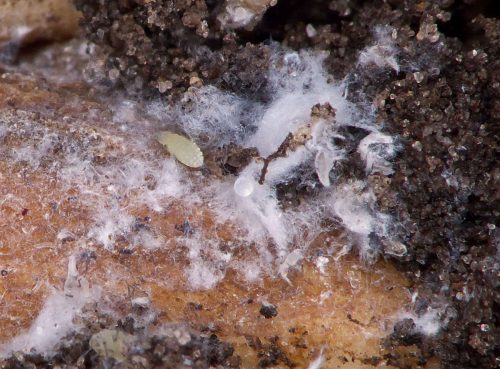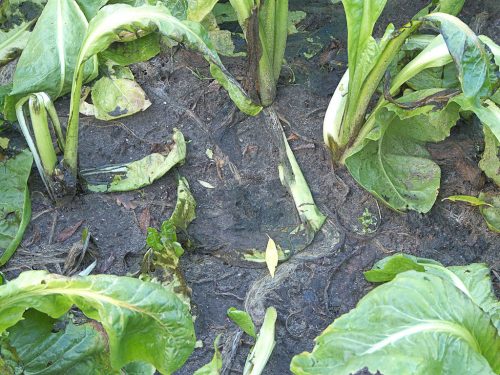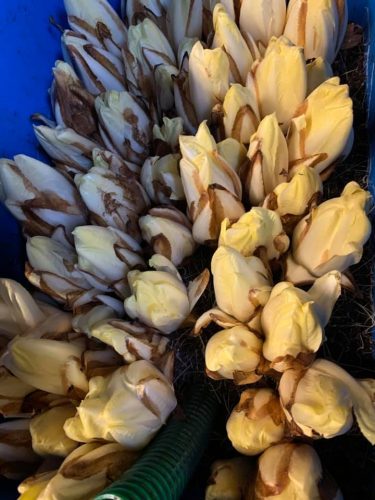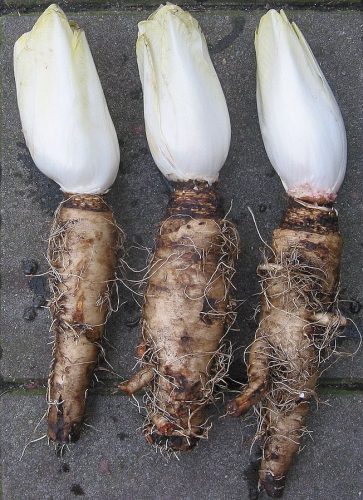Belgian endi
Also known as:
Root chi
End
Chi
Witlof (Australia)
You are viewing the mobile-adapted version of the page.
The one for tablets, laptop and desktop also provides general information, such as origin and cultivation.
Belgian en
Belgian en
Bugs
Tunnels in leaves and petioles, leaves shrivel and die: chicory leafminer fly (Napomyza cichorii).

The chicory lags in growth; on the roots are white-gray aph
Feeding on root or stem of young plant: wireworm (larvae of click beet
Delayed growth, insufficient length growth of roots, nodules at the ends of roots: Root knot nematode (Meloidogyne fallax).
Fungi & diseases

Leaf edges turn black: Pseudomonas marginalis.
Leaf of Belgian en
Gray-brown colored rot on the roots: Sclerotinia Rot (Sclerotinia sclerotiorum).
Roots of chicory planted in bucket in autumn turn black and die: Fusarium foot rot (Fusarium solani).
Other
Plant grows poorly, wilts: mice or voles.

During storage, the outer leaves turn brown. The cause is moisture:
– or too little (the stumps are too dry) or just too moist. Leaving the harvested Belgian en
While drying, the cuts heal. The drying time of uprooted Belgian en
Remove the brown leaves and eat the Belgian en

